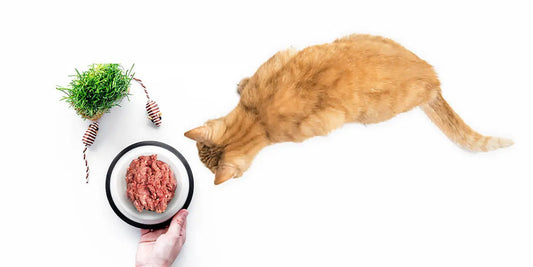
Why Balanced Fats Are Critical to a Dog’s Health
Written by Steve Brown
The balance of fats that a dog consumes has a profound influence on the dog’s cell membranes, those semi-permeable layers that allow cells to receive nutrients and eliminate wastes. Because every cell in the body has a cell membrane made mostly of omega-6 and omega-3 fatty acids, consuming the proper amounts of omega-6s and -3s has the potential to affect every organ system in the body.
A good dietary omega 6/-3 balance makes the cell membranes fluid, permeable, flexible and healthy. On the other hand, too much omega-6 (from chicken fat, corn oil, safflower oil, soy oil, canola oil, etc.), makes the cell membranes, including those in the brain, brittle, sluggish and inefficient, so that the dog thinks and moves a little slower. Likewise, too much of an omega-3 fatty acid called DHA in the diet can make the cell membranes prone to oxidation, which leads to premature aging.
The fats that a dog consumes affect every cell in its body, especially the cells in the brain and eyes. The consumption of balanced fats is especially important to fetuses and puppies; for example, consumption of proper fats (and the avoidance of rancid fats) when young can reduce the incidence of eye problems when dogs are old.
Here are four easy steps you can take to feed your dog the right balance of fats:
1. Feed lean meats. For those making their own foods, choose lean meats. If feeding chicken necks, for example, remove most of the separable fat and skin. When feeding beef, choose 90% lean. For those choosing commercial raw diets, only serve those products that have less than 45 kcal/oz (see my first blog for details), otherwise the product has too much fat and the fats can’t be balanced.
2. For commercial and homemade food feeders, including Darwin’s, rotate poultry (chicken, turkey, and duck) with ruminant (beef and bison). Poultry is high in polyunsaturated fats, and the ruminants are often high in saturated fats. Rotating, on a daily or weekly basis, provides an excellent balance of fats.
3. Add some fresh sardines weekly. Sardines provide two important fats, EPA and DHA, but both are very fragile (go rancid quickly). Some people use fish oils, but I think sardines are superior because they provide DHA in absorbable, well-protected forms. DHA is a very fragile fat, and should not be exposed to air at room temperature. I recommend feeding sardines in water (not soy oil) with no salt added. For small dogs, feed one can every other week; medium-sized dogs 1 can per week; and large dogs 2 cans per week.
4. Avoid feeding rancid fats, which can even be found in dry foods. Rancid fats can be contributing factors to many diseases. Some important fats, such as those from fish, turn rancid very quickly when exposed to air. The best way to avoid rancid fats is to buy fresh foods: raw products that are less than three months old, and, if you feed dry foods, choose freshly-made foods without added fish oil or DHA, the most fragile of all the fats.
Feeding your dog a proper balance of fats (including avoiding rancid fats) will help your dog live a happier, smarter, healthier and longer life.
(This is a short summary of several chapters on how to best balance fats from my book, Unlocking the Canine Ancestral Diet, Healthier Dog Food the ABC Way, Dogwise Publishing, 2009)


